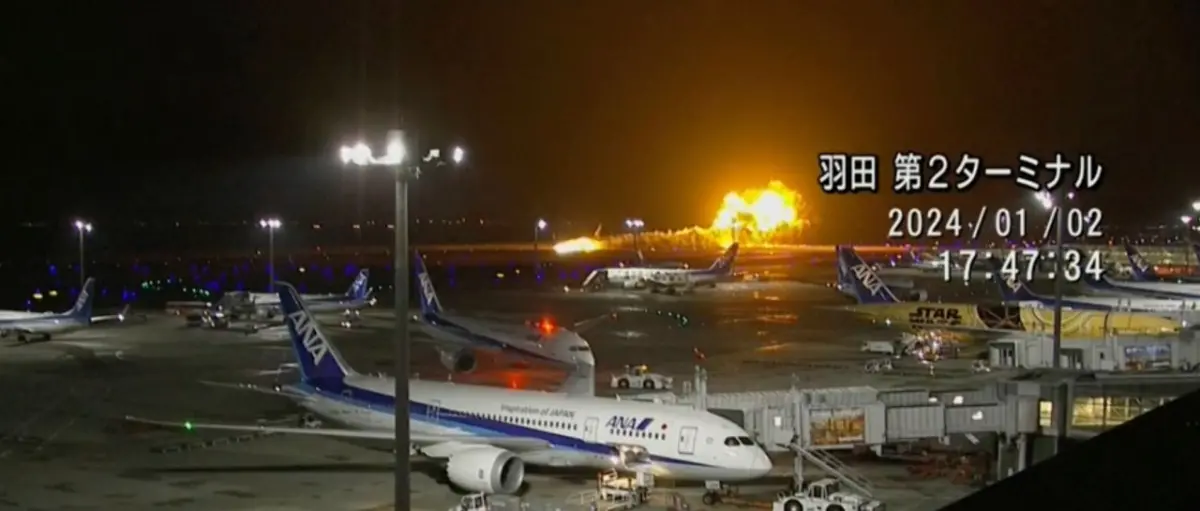A passenger plane caught fire upon landing at Tokyo’s Haneda Airport, following a collision with a coast guard aircraft.
The aircraft, arriving from Hokkaido with 379 passengers and crew aboard, collided with a coast guard plane during its descent, leading to a catastrophic fire.
The incident occurred as the plane was taxiing on the runway. Witnesses reported a loud explosion during the landing, followed by flames engulfing the aircraft. The fire rapidly intensified, with flames seen erupting from the plane’s windows, causing widespread panic among passengers and airport staff.
In response to the emergency, the airport was immediately shut down, halting all flights.
Tragically, five coast guard personnel aboard the colliding coast guard aircraft were initially reported missing. However, Tokyo’s fire department later announced that all five had been located. Details regarding their health status were not immediately disclosed.
A spokesperson for Japan Airlines confirmed that all passengers and crew from the Hokkaido flight were safely evacuated. The Japanese media reported a narrow escape for the pilot of the coast guard plane, who was among the six onboard tasked with transporting aid to an earthquake-affected region.
As the airport closure continued, firefighting teams worked tirelessly to bring the blaze under control. The incident has raised serious concerns about airport safety and emergency response protocols.
The aftermath of the accident saw a flurry of activity, with emergency services rushing to the scene and aviation authorities launching an investigation into the cause of the collision. The incident has sent shockwaves through Japan’s aviation industry, prompting calls for stricter safety measures and a thorough review of air traffic control procedures.
The Haneda Airport, one of the busiest in Asia, faces a challenging path to recovery as it deals with the fallout from this tragic event. The impact on international travel and the local economy is expected to be significant, with authorities working around the clock to resume operations and restore confidence in the safety of air travel.
The onset of 2024 has presented Japan with a series of formidable challenges, beginning with a devastating earthquake on New Year’s Day, followed by a significant aviation accident at Tokyo’s Haneda Airport on the second day. These consecutive events have not only cast a shadow over the nation’s start to the new year but also highlighted Japan’s vulnerability to both natural and man-made disasters. While these incidents underscore the need for robust disaster management and safety protocols, they also reflect Japan’s resilience and advanced emergency response capabilities. The swift mobilization of resources and efforts to aid those affected and initiate recovery processes demonstrate Japan’s preparedness and commitment to safety, even in the face of such daunting challenges.













